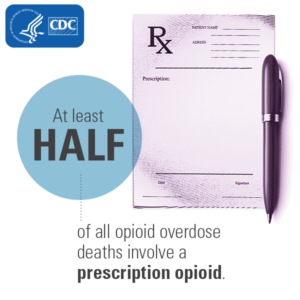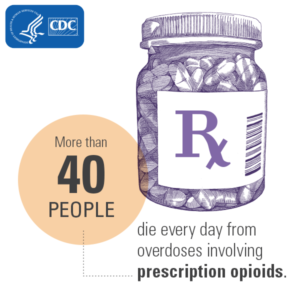
Non Opioid Pain Management
Every day, more than 115 People in the United States die from overdosing on opioids.
Physical Therapy is a smart choice for treating chronic pain
Chronic Pain Physical Therapy Programs
A 2016 study by the CDC found that many nonpharmacologic therapies including physical therapy can ameliorate chronic pain.
Part 1.
Examination
Our physical therapy team will classify the components of the patient’s pain. We will determine the root causes of all potential pain sources while considering the biopsychosocial model. Research shows that classification of pain syndromes improves outcomes.
Part 2.
Inclusion Criteria
Not all patients are ready to accept ownership and responsibility for their role in recovery. We will formally assess a patient’s readiness to change. For example, studies show that a high FABQ (fear avoidance belief questionnaire) score predicts poor outcomes with manual therapy for musculoskeletal pain. This provides evidence for the need to address the biopsychosocial aspects that effect a patient’s pain experience.
Part 3.
Program Content
Chronic pain management programs may include:
- Pain counseling
- Functional restoration program
- Implementation of exercise from an exercise specialist
- Patient independence for long term self management
- Massage/ manual therapy as needed
Physical therapy programs for chronic pain are important for a number of reasons:
- The cost to treat pain has increased dramatically while patients’ self reported health status has remained unchanged.
- If pain level correlated directly with pathophysiology, pain treatments would be straightforward, but this is not the case.
- Pathophysiological changes bear little relationship to reported pain intensity.
- Musculoskeletal pain has physical, neurological, cognitive, and psychoemotional mechanisms.
- Treatment commonly does not address the wide ranging factors that influence pain and therefore outcomes are poor.
Be Part of the Solution
The numbers are staggering, but with physical therapy, we can improve outcomes.



References:
- HEAL Initiative Research Plan (NIH, June 2018)
- Yelin E. Cost of Musculoskeletal diseases: Impact of work disability and functional decline. J Rheumatol Suppl. 2003; 68: 8-11
- Andersson G. Epidemiology of low back pain. Acta Orthop Scand Suppl. 1998;281:28-31
- Andersson G. The Epidemiology of Spinal Disorders. 2nd ed. Philadelphia, PA: Lippincott_Raven; 1997
- Deyo RA, Mirza SK. The case for restraintin spinal surgery: Does quality management have a role to play? Eur Spine J. 2009;18(suppl 3):331-337
- Martin BI, Turner JA, Mirza SK, Lee MJ, Comstock BA, Deyo RA. Trends in health care expenditures, utilization, and health status amonth US adults with spine problems, 1997-2006. Spine.2009;34:2077-2084.
- Weinstein JN, Lurie JD, Olson PR, Bronner KK, Fisher ES. United States trends and regional variations in lumbar spine surgery: 1992-2003. Spine. 2006;31:2707-2714.
- Kolski K, O’Connor A. A Word of Hurt. A guide to classifying pain. Thomas Land Publishers Inc. 2015; pg 2.
- Linton SJ. A review of psychological risk factors in back and neck pain. Spine. 2000;25:1148-1156.
- Lawrence RC, Helmich CG, Arnett FC, et al. Estimates of the prevalence of arthritis and selected musculoskeletal disorders in the Unitied States. Arthritis Rheum. 1998;41:778-799.
- Dahaghin S, Bierma-Zeinstra SM, Reijman M, Pols HA, Hazes JM, Koes BW. Prevalence and determinants of one month hand pain and hand related disability in the elderly. Ann Rheum Dis. 2005;64:99-104.
- Lautenbacker S, Kunz M, Strate P, Nielsen J, Arendt-0Nielsen L. Age effects on pain thresholds, temporal summation and spatial summation of heat and pressure pain. Pain.2005;115:410-418.
- Dworkin RH. An overview of neuropathic pain: Syndromes, symptoms, signs, and several mechanisms Clin J Pain. 2002;18:343-349.
- Gallagher RM. Rational integration of pharmacologic, behavioral, and rehabilitation strategies in the treatment of chronic pain. Am J Phys Med Rehabil. 2005;84:S64-S76.
- Cook C, Hegedus EJ, Ramey K. Physical therapy exercise intervention based on classification using the patient response method: A systematic review of the literature. J Man Manip Ther. 2005;13:152-162.
- Cleland J, Fritz J, Brennan G. Predictive validity of initial fear avoidance beliefs in patients with low back pain receiving physical therapy; is the FABQ a useful screening tool for identifying patients at risk for a poor recovery? Eur Spine J. 2008;17 (1):70-79.
- Lee H, McAuley JH, et al. Does changing pain related knowledge reduce pain
